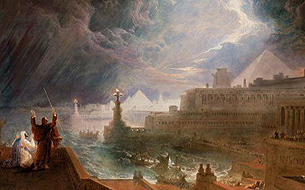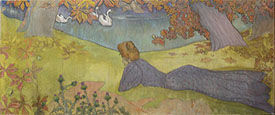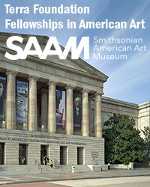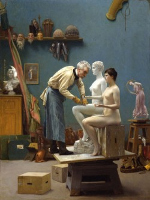X
Please wait for the PDF.
The browser will either open the file, download it, or display a dialog.
The browser will either open the file, download it, or display a dialog.
During the 1820s the artists John Martin, Francis Danby, and David Roberts each painted large-scale dramatic works representing the biblical narrative of the Israelite exodus from Egypt. The religious subject matter of these paintings has caused many to assume them to be politically conservative by nature; however, this article suggests that these works aligned more precisely with reformist political discourses, and that both the subject matter and the methods of representation generated meanings that substantiated progressive political policies during the "age of reform" in Britain.
When Viollet-le-Duc introduced a capital featuring Judith slaying Holofernes into the abbey church at Vézelay, he jettisoned his characteristically scrupulous archeological approach to the restoration of medieval architecture. If long dismissed by art historians as an inexplicable whim, this nineteenth-century carving here emerges as an ingenious attempt to make a Romanesque monument speak to a host of mid-nineteenth concerns, especially political ones.
Modernity, Regionalism, and Art Nouveau at the Exposition Internationale de l’Est de la France, 1909
Often called the 1909 World’s Fair, The Exposition Internationale de l’Est de la France was held in the city of Nancy and showcased the industrial and artistic accomplishments of the French region of Lorraine since 1871. The Exposition's architecture, a local brand of Art Nouveau, was a projection of Nancy’s complex regional yet modern identity, which was shaped by an emphasis on the cooperation between art and local industry, the political issue known as the "Alsace-Lorraine question," and a movement towards political and cultural decentralization.
Danish Painter P.S. Krøyer is too often dismissed as a superficial virtuoso who squandered his abilities on technical dabbling and vapid subject-matter. This article demonstrates that Krøyer's experimentation with styles and techniques observed and learned in Paris were not mere flourishes but strategic moments in his attempt to usher a negotiated modernism into the field of Danish painting.
The history of comics is usually traced back to caricature; artists such as William Hogarth, Thomas Rowlandson, and Rodolphe Töpffer are touted as the genre’s originators. In this article the author proposes a parallel route for the development of comics, going back to popular prints, specifically the Images d’Epinal in France.












